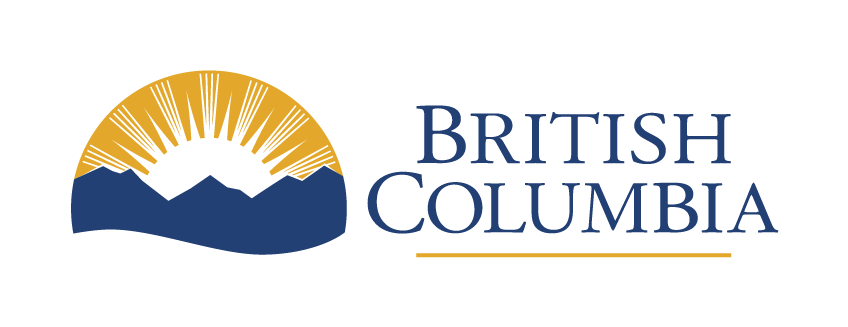Social media toolkit for partners
Partners in wildfire management can help amplify trusted sources of wildfire information by engaging their followers using official content supplied by the BC Wildfire Service. Post content directly to your own social media channels or follow us on Facebook, Instagram, and X (formerly Twitter) to share our posts!
Instructions for posting
- Copy-and-paste the content below in a new post
- Download, then attach applicable graphics
- Option: add information, photos and hashtags specific to your community
- Double check the links and tagged accounts before you post
Content
All Hazard and 365 Readiness
Not just a summer fling
As our climate continues to change, so has the typical length and severity of wildfire seasons. To help better prepare, in 2022 the BC Wildfire Service shifted to a strategic, year-round, all hazard response and preparedness model. This year-round model increases our capacity to engage in training and planning as well as support during other natural hazards such as a landslide or atmospheric river event.
Within this year-round, all hazard response model, the BC Wildfire Service is able to maintain more permanent staff year-round and allows for more flexibility when it comes to extending or recalling staff as needed. Adopting a year-round, all hazard model has allowed the BC Wildfire to shift towards a more proactive wildfire management approach.
Aviation
Airtankers vs helicopters
Have you ever noticed that some wildfires receive a blanket of white foam or red fire retardant from an airtanker while others receive a bucket of water from a helicopter? These are different wildfire suppression tactics used by firefighting aircraft.
Airtankers are fixed-wing aircraft that can hold up to 6,130 litres of water or 10,910 litres of fire retardant. While land-based airtankers are loaded with water and foam or retardant at an air base, skimmer airtankers scoop water from accessible bodies of water. Foam and retardant are typically dropped on unburnt fuels ahead of a wildfire, inhibiting its spread by reducing oxygen and heat.
One of the ways helicopters are used in wildfire response is for bucketing operations. This involves a large, collapsible bucket that is suspended from a rotary-wing aircraft and filled with water from a lake, river or other accessible, nearby water source. This water is then transported and released on or around a wildfire to help cool identified hot spots, aiding ground personnel working along the fire edge.
For more information on BC Wildfire aviation operations, visit: https://www2.gov.bc.ca/gov/content/safety/wildfire-status/wildfire-response/wildfire-personnel-and-response-tools/wildfire-aviation
Helicopters roles in wildfire response
Rotary-wing aircraft (helicopters) aid wildfire response in a variety of ways. Helicopters can be used to transport personnel and equipment quickly to and from the fireline. They are also a tool of information, providing us an aerial view of the wildfire, which helps wildfire management personnel identify values at risk and strategize response. Helicopters are also used to cool areas along or beyond the fire's edge by dropping water on identified hot spots.
Types of helicopters are typically divided into three categories: light, intermediate/medium and heavy. Light duty helicopters are primarily used for personnel transport. Intermediate/medium helicopters can be used for initial attack response, water transportation as well as personnel transport. Heavy duty helicopters are almost exclusively used for water and retardant delivery.
For more information on how helicopters are used in wildfire response: https://www2.gov.bc.ca/gov/content/safety/wildfire-status/wildfire-response/wildfire-personnel-and-response-tools/wildfire-aviation#helicopters
Skimmer airtankers
Skimmers are one of the two general types of fixed-wing aircraft used in wildfire management. The BC Wildfire Service uses four types of skimmers with varying load capacities, holding between 2,000 and 6,130 litres of water.
Skimmer airtankers can scoop water into their tanks or floats from bodies of water that are at least 1.8 metres deep and offer a minimum of 1.6 kilometres of obstacle free water. A foam concentrate is commonly injected into the tank, which when combined with water creates an effective, short-term fire retardant. Foam adheres to fuels more readily than water while reducing surface tension, which allows water to be absorbed more easily. Foam also helps suppress fire growth by reducing oxygen and reflecting incoming heat.
Learn more about skimmers and our other wildfire response tools and tactics: https://www2.gov.bc.ca/gov/content/safety/wildfire-status/wildfire-response/wildfire-personnel-and-response-tools/wildfire-aviation#airtankers
Crew Types
Coming soon
Fire Origin and Cause Investigations
Coming soon
Fire Weather
Coming soon
Heavy Equipment
Coming soon
Holidays
Coming soon
Mobile App
Coming soon
Recovery and Rehabilitation
Coming soon
Training and Recruitment
Coming soon
Graphics
Coming soon
